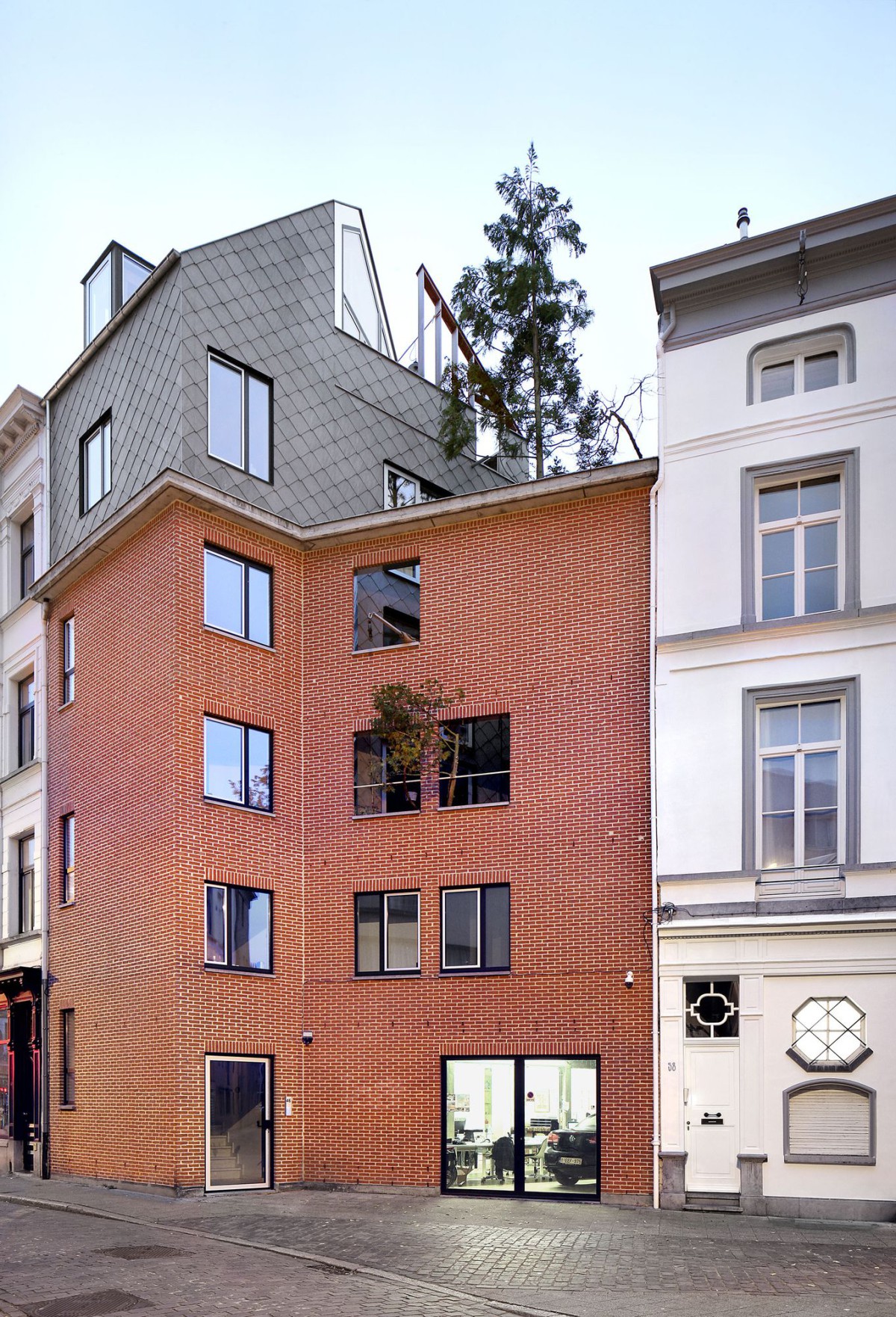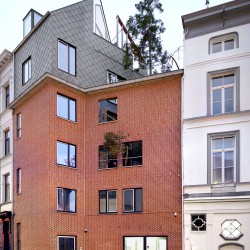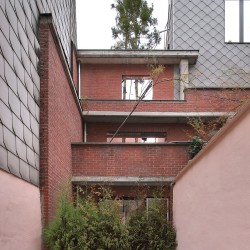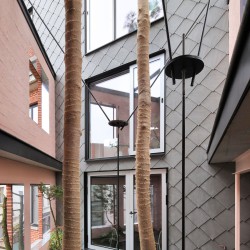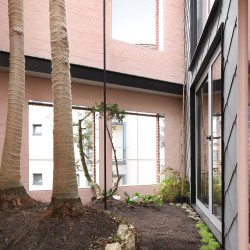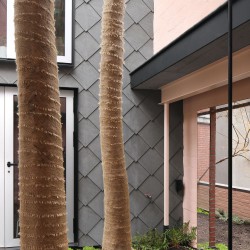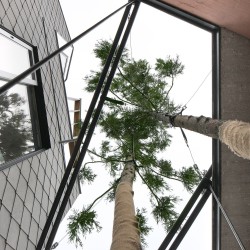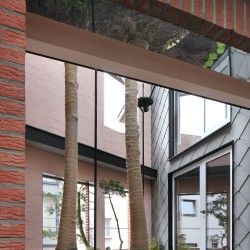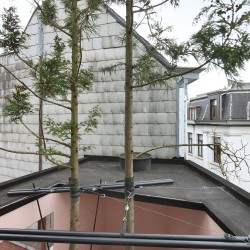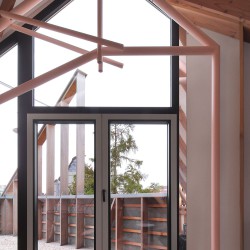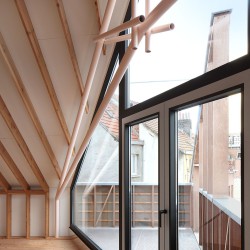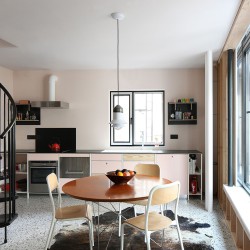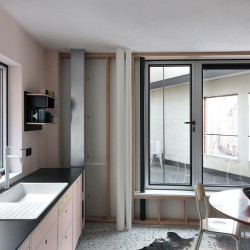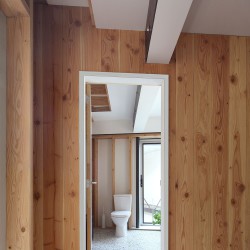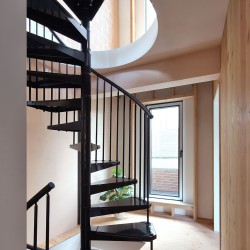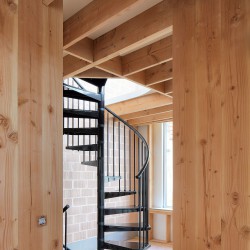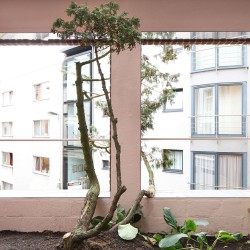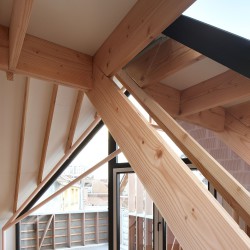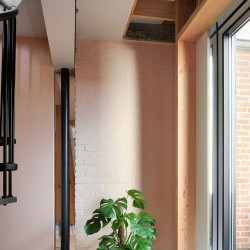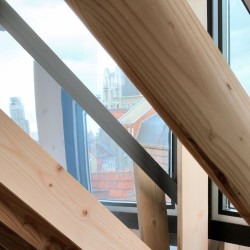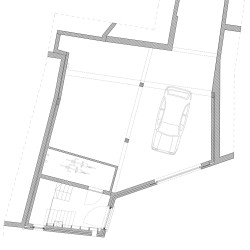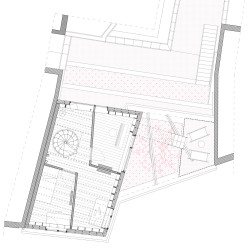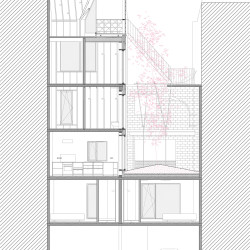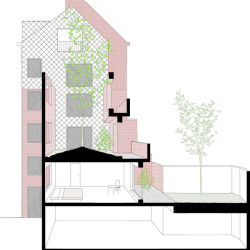architecten de vylder vinck taillieu . photos: © FILIP DUJARDIN . + divisare
The Huik house in Antwerp is at least as radical. De vylder vinck taillieu have built a complex house and B&B on a small, enclosed and irregular plot with an angled building line that reformulates the problem of vertical organisation in a small area into a solution. The constituent elements of the building are separately articulated, but not separated. The ground floor, with the entrance to the B&B and the house, is an open space across the whole complex, initially intended as a garage but now fitted out as a workroom.
_
On the first floor there are two guestrooms with a terrace at the back. A volume has been built above these two storeys on the broad half of the plot, with an attic floor that projects above the brick street façade like a separate little house. Behind this street façade, on the second, narrower part of the building, there is a terrace garden with two trees whose tops extend above the street/garden façade. At the back of the house, a spiral staircase and ordinary staircase connect the various floors: dining room and kitchen on the second, bedroom and bathroom on the third, a children’s room, study and music room on the fourth, and a sitting room and living room with a terrace on the fifth. The stairwell and spiral staircase inside the house and the enclosed terrace garden, combined with the arrangement of the internal spaces, create a maximal, exceptionally complex space in a small area. In-between spaces and corners with no specific function are to be found just as much, if not more, and are as important as the table or the bed. The lines of circulation, the sightlines, a number of constructional elements and the trees simultaneously point in different and intersecting directions. This means the house has no middle, no central point where movement naturally comes to a standstill. Each place touches on other places, here and elsewhere. At no point do inside and outside form a hard contrast, since each place is a mixture of the two.
This text is based on an article by Bart Verschaffel

